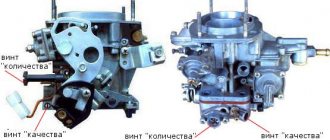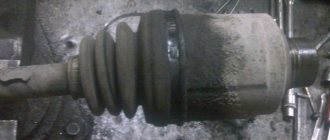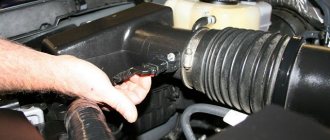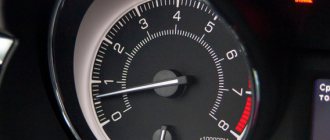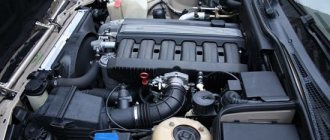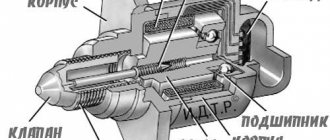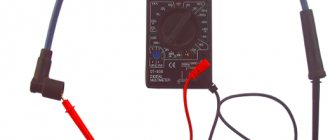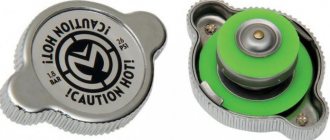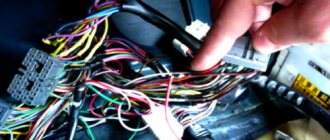Each car consists of many components and consumables that require regular maintenance or replacement. And if you do not carry out routine maintenance, you may encounter various problems in the operation of the vehicle. And one of them is high idle speed (idling speed), which leads to unjustified fuel costs.
general information
The problem of high engine idle speed is very common, and it manifests itself in both injection and carburetor power plants. And there are many reasons that cause such a breakdown, so before starting repairs, it is important to understand what led to it.
It doesn't take a car expert to notice that your car is idling at high speeds. Even a beginner can carry out primitive diagnostics, since the problem will be accompanied by strong engine noise and the appearance of third-party sounds during its operation. You can also analyze the tachometer readings at a specific period of time - if they do not correspond to normal mode, then it’s time to go to the service station.
The normal speed at idle depends on the engine size. The average rate varies in the range of 650−950 rpm. in a minute. If these indicators are displayed on the dashboard, most likely everything is fine with the engine. If there is a slight deviation from the average statistical norm, there is no cause for concern. In many modern cars that are equipped with injection units, as the speed increases, an indicator light comes on, indicating the need for a technical inspection.
If the problem is not corrected, this can lead to various problems . Among them:
- Uneconomical fuel consumption. As the speed increases, a significant part of the fuel-air mixture is wasted.
- Reduced engine service life. The malfunction affects both the life of the motor and the installation itself.
To prevent unnecessary costs and return the car to its previous performance, you need to immediately send it for diagnostics. Service center employees will carefully check the engine for serious damage, find the cause of the increased speed, and then offer the best options for eliminating it.
Also, motorists are faced with a problem in which the speed begins to “float” from high to low and back again. In most cases, this occurs due to classic damage to individual components or their incorrect configuration.
Reasons for high engine speed at idle
High speeds on a hot engine can be caused not only by excess air, but also by poor fuel, dirty injectors, and faulty spark plugs. In this case, the electronic unit will calculate the working air-fuel mixture, but it will not burn.
If the engine idles high, over 1100 rpm, the reason may be a breakdown of the sensors, ECU, or abnormal air leaks. Let's look at how sensor failure is related to high motor rotation.
Mass air flow sensor
The mass air flow sensor is located between the air filter and the intake manifold. The mass air flow sensor measures the mass of air entering the engine and transmits the readings to the ECU. Based on data on the mass and temperature of the air, the computer calculates the density of the mixture to be supplied to the combustion chamber.
If the sensor is not working properly, the ECU will notify the driver by triggering the Check Engine. To check the mass air flow sensor, technicians compare readings at idle speed, as well as at 1000 and 2000 rpm, with reference data from the manufacturer’s specifications or a working sensor.
If the flow meter is working properly, then the excess air mixture enters bypassing it.
https://youtu.be/Z0emkgXDytY
IAC sensor
The XX regulator is a stepper motor with a stem valve located on the throttle body. IAC is designed to stably maintain engine operation at idle, bypassing a closed throttle valve. The degree of opening of the channel is controlled by the ECU.
High idle speeds may indicate a malfunction of the IAC, which keeps the channel open to its full cross-section. The sensor is checked visually for dirt and defects. Measure voltage and resistance with a multimeter or diagnose with an adapter. If the readings are high, the sensor is replaced with a new one.
TPDZ
The sensor adjusts the throttle position according to the instructions of the ECU. The reasons for the increased speed can be associated with either a breakdown of the TPS or contamination of the throttle itself.
Similar article Check engine light on Lada Kalina
A sensor malfunction is accompanied by:
- high floating idle engine speed;
- lack of power during acceleration;
- the Check Engine icon comes on.
The sensor is checked by measuring voltage and resistance. Or they install a new, working TPS and evaluate the engine’s performance.
https://youtu.be/_bFKw61jn0c
Throttle valve
When the driver presses the gas, the throttle valve opens and allows the air mixture into the manifold. Over time, the throttle becomes contaminated with tar and oil deposits of exhaust gases and can jam or jam. In this case, at XX the damper will not be completely closed. The problem is solved by cleaning the throttle with carb cleaner.
High idle speed due to the throttle body can occur if the drive cable is overtightened or broken. The throttle cable drive design is found on older engine models.
Motor temperature sensor
The ECU controls engine speed based on the temperature sensor readings. As soon as the engine temperature drops, the computer spins the engine to quickly warm up. The ECU may receive incorrect information if the temperature sensor or wiring fails. To diagnose the sensor, you need to measure its resistance on a cooled and warmed up engine, and then compare the readings with the specification.
High idle speed on a warm engine can also be associated with a malfunction of the coolant temperature sensor, intake air temperature or thermostat.
Collector
The intake manifold distributes the incoming air throughout the combustion chambers. The reason for high engine idle speed may be due to air leaks due to a leaky intake system. In this case, check the tightness of the bolts, the quality of the gaskets, vacuum hoses and the integrity of the manifold body.
Air leaks on a warm engine can be monitored using a soap solution. To do this, soap all possible leak points: in places where there is leakage, the soap will begin to bubble. You can also monitor the hissing sound, or alternately pinch the hoses approaching the manifold.
Electronic control unit
The electronic unit is the brain center of the motor. A faulty ECU can cause high engine idle speeds. To check the functionality of the electronic unit, you need to connect it to diagnostic equipment and test it. Often ECU problems can be solved by replacing the software.
Similar article VAZ 11186 engine, do the valves bend on the 8 valve Grant
Carburetor models
The era of carburetor-type engines has long come to an end, so it is very difficult to find them under the hood of modern cars. However, there are people who are not going to abandon the domestic automobile industry and turn to car services with a complaint that their VAZ-2109 stalls at idle.
Injection engines have long occupied a leading niche, and it would be logical to become familiar with the reasons for high idle speeds in the presence of an injector, but most of them have something in common with carburetor engines. Therefore, first of all, you need to understand why the speed increases on old power plants with carburetors. The following factors can lead to this:
It may also be interesting: Proper running-in of studded winter tires
- Incorrect system adjustment. If the idle speed control unit has been adjusted incorrectly, which often happens after routine carburetor repairs or cleaning, a problem with high speeds is inevitable. Also, when servicing a car independently, many drivers choose the proportions of air and fuel incorrectly, and this is also a serious mistake.
- Damage to the throttle valve. If there is a loss of sealing of this element, the risk of increasing idle speed will be maximum. Often the throttle valve stops working normally due to carbon deposits appearing on it. Therefore, experts advise cleaning the part. And if it was seriously damaged, for example, cracked, then you will have to replace it. Such an event can only be implemented on some carburetor engines.
- Needle valve position. With this problem, the fuel chamber will receive incorrect portions of the fuel-air mixture.
- Burnt out cylinder block gasket. The problem can be resolved by simply replacing the gasket. To make sure that a part has been damaged, it is enough to check its condition while the engine is running. If white smoke starts coming out after opening the hood, it means the gasket needs to be changed.
- Open suction. The malfunction is diagnosed by checking the quality of operation of the damper in the primary chamber. If failures were detected at the inspection stage, all that remains is to look at the operation of the choke. In most cases, the problem is solved simply - the motorist needs to lubricate the damper drive and cable.
How to find and fix problems with high speed?
If you have a modern, high-quality car, just go to the service station. It is better to use the services of an official service if your car is under warranty. This way you will maintain the warranty and be able to find specific problems with branded equipment. Finding a problem should start with diagnostics. On injection engines it is possible to use special computer diagnostic systems. You can use even a simple sensor like the ELM-327 and look for problems in the system yourself.
The algorithm for solving the problem is as follows:
- you go to a mechanic and carry out computer diagnostics of the car, at this stage most of the sensors are checked for errors and incorrect information, and the ECU is tested;
- if the problem is not found, it is worth paying more attention to testing the idle air regulator or the sensor on the damper; this unit does not always produce errors during computer diagnostics;
- if everything is fine with this unit, it’s worth looking at whether there are problems in the wiring; usually an electrician will help do this; high-quality diagnostics will be the starting point in solving the problem;
- further, the problems found must be eliminated; to do this, choose high-quality original spare parts; installing cheap Chinese sensors will not lead to the desired result;
- The last stage of repair is a thorough re-diagnosis to determine the condition of all components, as well as to prove the absence of problems, this is an important final stage.
After this, you need to check the operation of the car in all modes. If everything is done correctly and efficiently, there will be no problems with the car. It is worth considering that diagnosing the electrical part is often a complex process. Each sensor requires a special approach. Sometimes you have to measure the voltage or resistance at the sensor contacts with a multimeter in different modes and operating conditions. All this delays the process of detecting a breakdown. But you definitely need to deal with the problem, if there is one. Otherwise, the engine will continue to operate in uncomfortable modes and will wear out faster.
Injection engines
The listed reasons for increased idle speed apply to carburetor engines. But many of them make themselves felt on injectors. However, in the second case, problems with electronics are added to the list of problems. High idle speed on injection engines is explained as follows:
- Incorrect setting or damage to the antifreeze temperature control sensor. If the unit fails, the engine will succumb to constant warming up, which will not allow it to freely drop speed. This is due to the fact that the control unit does not receive any information (or receives it, but incorrectly) about the current degree of heating of the power plant, so it will try to heat it. In addition to uneconomical fuel consumption and high idle speeds, the problem can cause a more serious problem - overheating of the engine with subsequent failure. In this case, you will have to carry out complex and expensive repairs to the unit. To determine problems, just use a diagnostic scanner.
- Damage or malfunction of the throttle position sensor. This element is one of the most important in all injection engines. If it supplies the ECU with incorrect data indicating that the throttle is opening, the speed will constantly increase. The problem is caused by jamming or complete damage to the part.
- Damage to the return spring or problems with its operation. As the vehicle is used, the return spring may stretch or jump out of place, which will lead to the problem in question. You can restore the previous state through your own efforts.
- Throttle cable sticking. The defect appears in older car models, for example, VAZ 2107, 2109, 2110, etc., and is solved by simply replacing the cable or applying lubricant to the existing part.
- Damage to the sealing gaskets on the injectors. It is very difficult to determine such a breakdown, and during maintenance it is carried out last. If the gaskets are damaged, additional air enters the combustion chambers, which increases the speed.
It may also be interesting: Polishing headlights is necessary when the headlights are cloudy
What is high engine speed
The rotation of the engine depends on the amount of air supplied. The air mixture enters through the throttle valve, then passes through the intake manifold into the cylinder block. The throttle position sensor (TPS) transmits data about the opening angle to the ECU. The computer calculates the amount of air entering and determines how much fuel to supply to create the working mixture. Accordingly, high speeds arise due to incorrect calculation of the ECU or excessive air entering the engine.
During normal engine operation during startup and operation without load, i.e. at idle speed, the speed is not high: up to 600 - 1000 per minute. The readings are displayed on the tachometer. It is permissible to rotate the motor at high speeds, 1100 - 2500 rpm, “cold” in winter for 10 seconds. During this time, the engine will warm up the oil and coolant to an operating temperature of +80℃…+90℃. The motor will become noisier.
If the tachometer needle does not decrease for a long time, you need to look for the reason why the speed is high.
High speeds when starting the engine or “hot” can be constant or floating. “Swimming” is typical for injection engines. If there is a lot of air in the combustion chambers, the injector, as directed by the ECU, will supply a lot of fuel. Turnover will increase. But gradually the mixture will become leaner, and the engine will begin to stall. The indicator may drop to 500 rpm, but with a new portion of the air mixture the process will repeat, and the speed will become high.
https://youtu.be/nfg_O5KOhsk
Similar article ZMZ 409 UAZ Patriot engine: timing marks, chain replacement and phase installation
Electronics problems
Unlike carburetor engine models, injection engines are completely dependent on electronic devices, and most importantly, on the electronic control unit, which distributes and configures the functions of all components depending on the current operating conditions. And if the ECU stops receiving accurate information about air volume due to the problems listed above, this is accompanied by more serious failures .
First of all, the controller will cause an increase in speed in order to enrich the fuel with air, and the ready-made mixture will be sent directly to the engine, but in the wrong proportion. As a result, the power plant will begin to malfunction or stall altogether, and all due to the incorrect composition of the fuel-air mixture.
As the speed decreases, the volumes of sucked air masses decrease. But after some time, the proportions of fuel and air will be restored, respectively, and the speed will become normal, but not for long. Soon they will begin to fall or “float”, which indicates the presence of failures in the internal combustion engine, TPS or mass air flow sensor. In addition, you need to take into account the possibility of air leaks at the intake valve.
High speed after starting the engine - how to deal with it?
Owners of fuel-injected cars do not always completely overcome the problems that previously existed on cars with carburetors. The troubles of increased fuel consumption and high speeds continually enter the lives of motorists and force them to seriously think about the issue of safety and quality of operation of the power unit. If you've never encountered the problem of high revs, chances are you've always driven high-quality new cars. Over time, the electronics begin to fail, the ECU makes hasty conclusions and begins to spoil the nerves of the car owner. In this case, no errors may appear on the instrument panel. In particular, the Check Engine will remain silent, and computer diagnostics will stubbornly declare that there are no problems or errors in the car. So, what exactly can high revs mean after starting the engine? Today we will try to figure this out and give a couple of recommendations.
Idle speed control
The reason for the increase in speed at idle may be a damaged or incorrectly configured servo device - a special regulator installed in the air duct. Its task is to force a change in the speed value to ensure a smooth transition of the power plant to idle mode after removing the foot from the gas pedal. Simply put, the engine does not immediately begin to slow down, but does so slowly and evenly.
The servo device is also responsible for increasing the speed when starting the car, and then decreasing it after entering the working gear. An increase in values also occurs when the load on the engine unit increases at idle, for example, when the air conditioner is turned on, the seats or mirrors are heated, the headlights and dimensions are turned on. Damage to the unit is accompanied by an increase or floating of revolutions.
You may also be interested in: How much does it cost and how to paint a car?
Let's sum it up
There can be a lot of problems with unstable engine speed. Almost every sensor can produce a similar effect. It is also interesting that the motor can give increased speed due to conflicts in the firmware, troubles with contacts in the electrical wiring. Problems can even arise simply due to bad fuel or clogged filters. It’s worth starting repairs with diagnostics. If you have not changed the filters or carried out regular maintenance for more than 1 year, it is worth doing this process. Don't forget that a car engine depends on the quality of the lubricant; bad oil can simply be detrimental to engine hardware parts.
Restoring a car that exhibits high idle speed begins with checking the operation of the electrical equipment. It is the sensors and wiring that most often lead to the fact that the motor operates unstably and does not provide the desired characteristics. But problems can also be hidden in spark plugs, ignition coils, high-voltage wires and other elements. Sometimes the problem is due to the timing belt jumping under heavy loads. In such situations, the operation of the engine will initially be unstable and become a problem for your car. Comprehensive service and high-quality diagnostics will help solve problems. Have you ever encountered high speeds after starting the engine?
Source
Air valve
If there is a problem with excess air being sucked in, it is important to check the special air valve for damage. We are talking about a device that increases the speed when starting and warming up an internal combustion engine. To shut off the air supply, the unit is equipped with a special damper or rod with a sensitive thermoelement, which works like a thermostat and automatically determines the appropriate conditions for the start of suction.
When the engine is warm, the choke extends fully to stop the flow. Next, the electronic control unit calculates the optimal air volumes and reduces fuel consumption. This is also accompanied by a decrease in speed.
But if the engine is not warmed up, the unit is fully open and begins the process of enriching the fuel mixture with air. Problems with speed appear both as a result of damage to the device itself and due to incorrect operation of the temperature sensor.
How do you know when high revs are a problem?
You need to understand why the engine started running at high speeds, and what a high speed level actually means specifically for your motor. For example, Lada Granta can increase engine rotation to 2000 RPM if it is cold outside. This is done by most injection machines that have an engine warm-up program. In the summer, startup usually occurs at a level of 1100-1200 RPM, but in winter the picture may be different. But this is not at all connected with malfunctions and problems. Rather, it indicates the correct operation of the sensor system and electronic components in your car.
The following behavior of the car can be considered a problem:
All these nuances indicate that it’s time to work on the car. Pay attention to the car's behavior. It is quite possible that changes in the behavior of the car when starting are due to the fact that the car is simply warming up the engine before driving. If everything happens smoothly and within the permissible speed limits, there is no point in worrying. But any extremes will cause trouble. If you notice specific problems, it's time to act and return the car to normal. True, this may not be easy to do.
Electronics failures
Idle speed control
Checking the engine idle speed control
After replacing the idle air regulator, it must be “registered” i.e. enter its parameters into the ECU memory.
The idle air control (IAC) is a stepper motor (solenoid) that operates from pulse signals supplied by the electronic control unit (ECU) . It works in a similar way to the screw for adjusting the amount of mixture in the carburetor - when the valve extends, it closes the fuel channel, and when it moves back, it opens it. It often happens that the regulator core simply jams and it stops responding to ECU signals. Moreover, you can damage the idle air regulator even in the store when purchasing it - by trying to turn or press the valve needle with your hands. If after replacing the idle speed sensor (regulator) there are high speeds, then most likely the problem is either in the ECU or in the mass air flow sensor - all the elements that make up the power system work in interaction, and diagnostics need to be carried out. It is quite possible that you will have to “register” a new regulator - that is, enter its parameters into the ECU memory.
temperature sensor
This sensor can also affect the engine fuel system. By issuing an incorrect signal (corresponding to a low temperature) to the ECU, it will cause the controller to give a signal to other elements of the fuel system (including injectors) that the mixture is enriched. An incorrect sensor signal will result in idle speeds exceeding 1000 min-1.
Mass air flow sensor
The mass air flow sensor directly affects the quality and quantity of the mixture supplied to the cylinders - after all, the ECU “knows” about its composition thanks to this (and some other) sensors. In conclusion, if your car’s engine has increased idle speed for no reason, first look for the cause in possible jamming of the fuel system mechanisms - after all, they are the ones who are primarily exposed to various contaminants, and for electronic components, power surges or short circuits are much more dangerous.
We recommend: Why does a car engine stall and how to deal with it?
